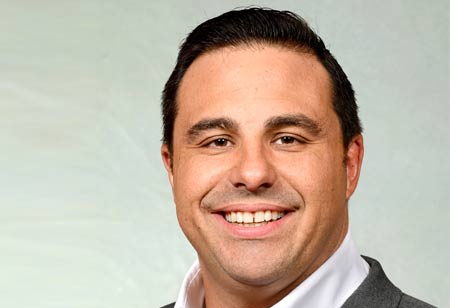Johnny Ivanyi, a seasoned supply chain management professional with over 20 years of international business experience at General Motors, Monsanto, and Bayer, currently serves as the Global Head of Distribution Operations at Bayer. He is a visionary leader, spearheading logistics transformation globally within the crop science organization. His expertise lies in digital transformation, customer-centric solutions, and data-driven business models. Ivanyi implements innovative technologies such as global transportation management solutions, warehousing management solutions, RPA processes, and machine learning. His specialties include TMS, WMS, SAP, S4 Hanna, supply chain transformation, predictive analytics models, and global sourcing.
Please provide a detailed overview of your responsibilities and role as the Global Head of Distribution Operations at Bayer.
As the Senior Director for the Center of Excellence Logistics at Bayer Crop Science, I oversee digital transformation and logistics for various business units, including chemicals, seeds, and vegetables. This responsibility spans the organization’s operations in 80-85 countries globally and for different regions. Over the past four or five years, our focus has been on a comprehensive transformation involving processes, people, and systems. The main pillars of this transformation include providing IT tools to operational teams to facilitate the progression of Bayer’s overall transformation journey across these extensive operations.
Establish a clear vision and roadmap for your transformation. Align elements globally with agile execution, and consider diverse internal needs for effective change management
What are your daily responsibilities at Bayer Crop Science, leading digital transformation and logistics for global operations?
Leading a global team in India, Amsterdam, and Argentina, my role revolves around three main areas. Firstly, managing all significant projects, like the transition from Excel to tools such as TMS. Secondly, driving operational excellence by sharing the best practices globally, focusing on sustainability and continuous improvement. The third aspect involves tracking metrics and insights to measure improvements organization-wide. Additionally, there’s a team dedicated to optimizing visibility, collaboratively working with the Smart Center and tools to enhance the experience for internal customer stakeholders.
My day-to-day activity involves coordinating with diverse stakeholders and teams globally, navigating the intricacies of the transformation, and ensuring a collaborative approach with IT. The role requires constant attention to the people, process, and system elements, with a focus on the holistic development of my team.
What are some of the challenges that you face in your current operation or management there?
One of the significant challenges, and perhaps the most pragmatic, is change management. Shifting the organizational culture from traditional systems to embracing technology poses a considerable hurdle, especially for those accustomed to working with Excel files. While my team provides the necessary technology, the transformation is not just about tools; it involves a crucial change management element. Securing promoters and believers in the transformation becomes essential. Ensuring a unified voice among diverse stakeholders globally, considering varied backgrounds and expectations, is crucial, especially as we implement projects across different countries and regions.
What features or capabilities do you envision in an enhanced solution or service for global sourcing?
Our foundation includes a 10-year-old Transport Management Solution (TMS), visibility tools, and end-to-end (E2E) or business-to-business (B2B) warehouse connectivity. The focus for the future is on integrating predictive models. Currently transitioning from a reactive approach to a proactive one, the next step is incorporating predictive analytics models. This journey involves evolving from reactive and proactive strategies to a future state where predictive and descriptive analytics play a central role.
As a leader in your field, what advice would you offer to emerging professionals or individuals in similar roles?
My advice centers on two key aspects. Firstly, establish a clear vision and roadmap for your transformation. Define your end game and align elements such as processes, people, systems, and capabilities with this vision, acknowledging the variations across countries, regions, and operations.
Secondly, focus on execution through agile methodologies rather than waterfall approaches. Embrace incremental progress by implementing changes globally in sprints. This allows for continuously sharing features with internal stakeholders, avoiding long waits for significant overhauls. Break down the transformation journey into manageable stages, providing stakeholders with evolving trends and technologies. This phased approach ensures that, over time, you achieve substantial and impactful changes. Always remember the diverse needs of your internal customers across different locations, as understanding and addressing these needs are crucial for effective change management. Understanding these elements is crucial as they interconnect. Execution happens on a face-to-face basis, varying by country and region, all under the umbrella of a clear vision.
Additionally, adoption is critical, and I often draw an analogy to owning a Ferrari – having the technology is one thing, but without proper training and guidance, you won’t utilize all its features. Sometimes, organizations invest heavily in technology and people, but adoption remains low. This highlights the importance of change management. Measuring the adoption of new technology and trends reinforces that you are on the right path. A clear vision, agile execution, and vigilant adoption measurement are crucial. If refinements are needed, they can be done in the following “spring” or iteration. The agile approach ensures a balance between incorporating new technology swiftly and maintaining speed. The overall goal is to avoid prolonged timelines, recognizing that swift changes are necessary for success in the team.



